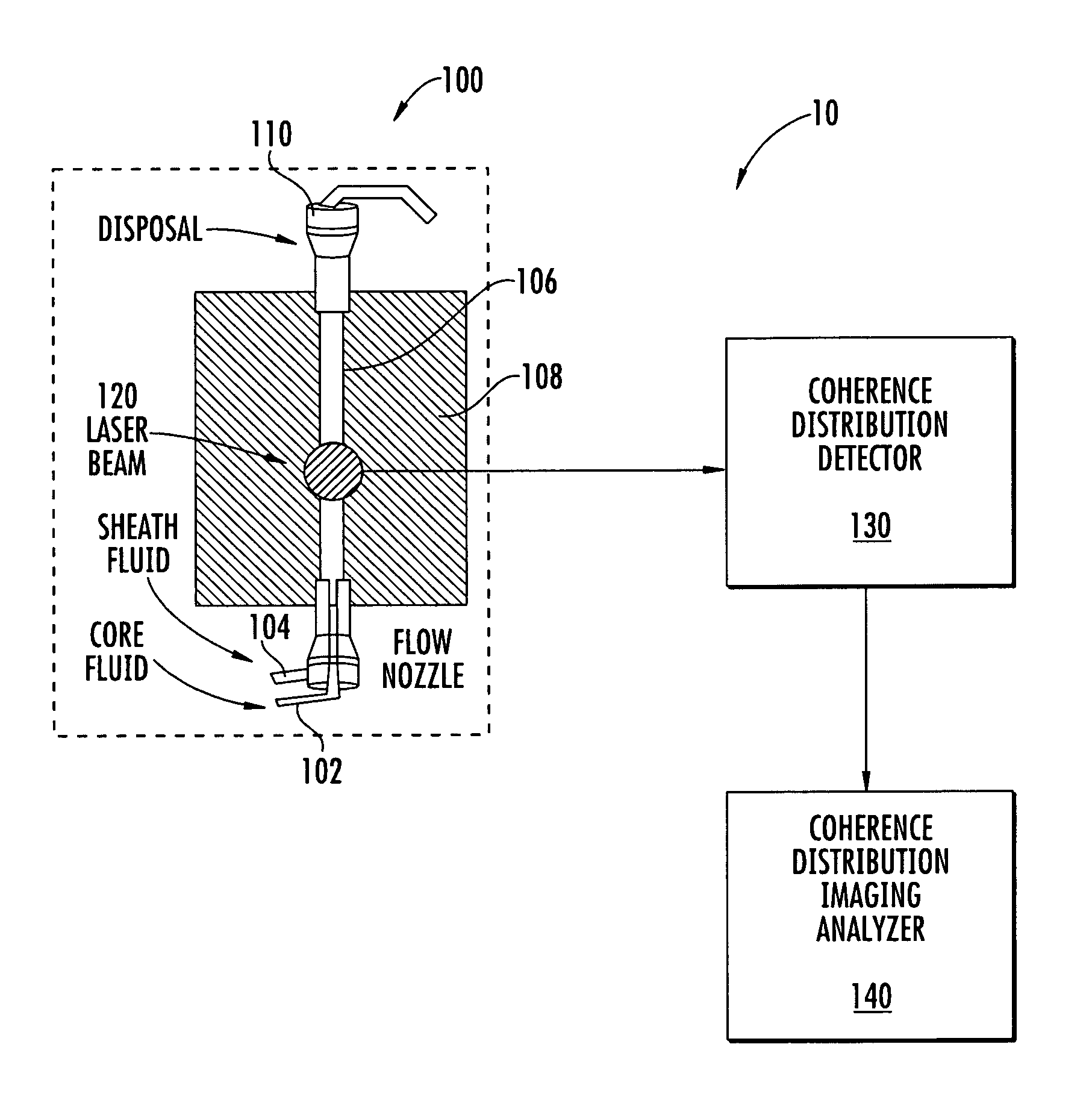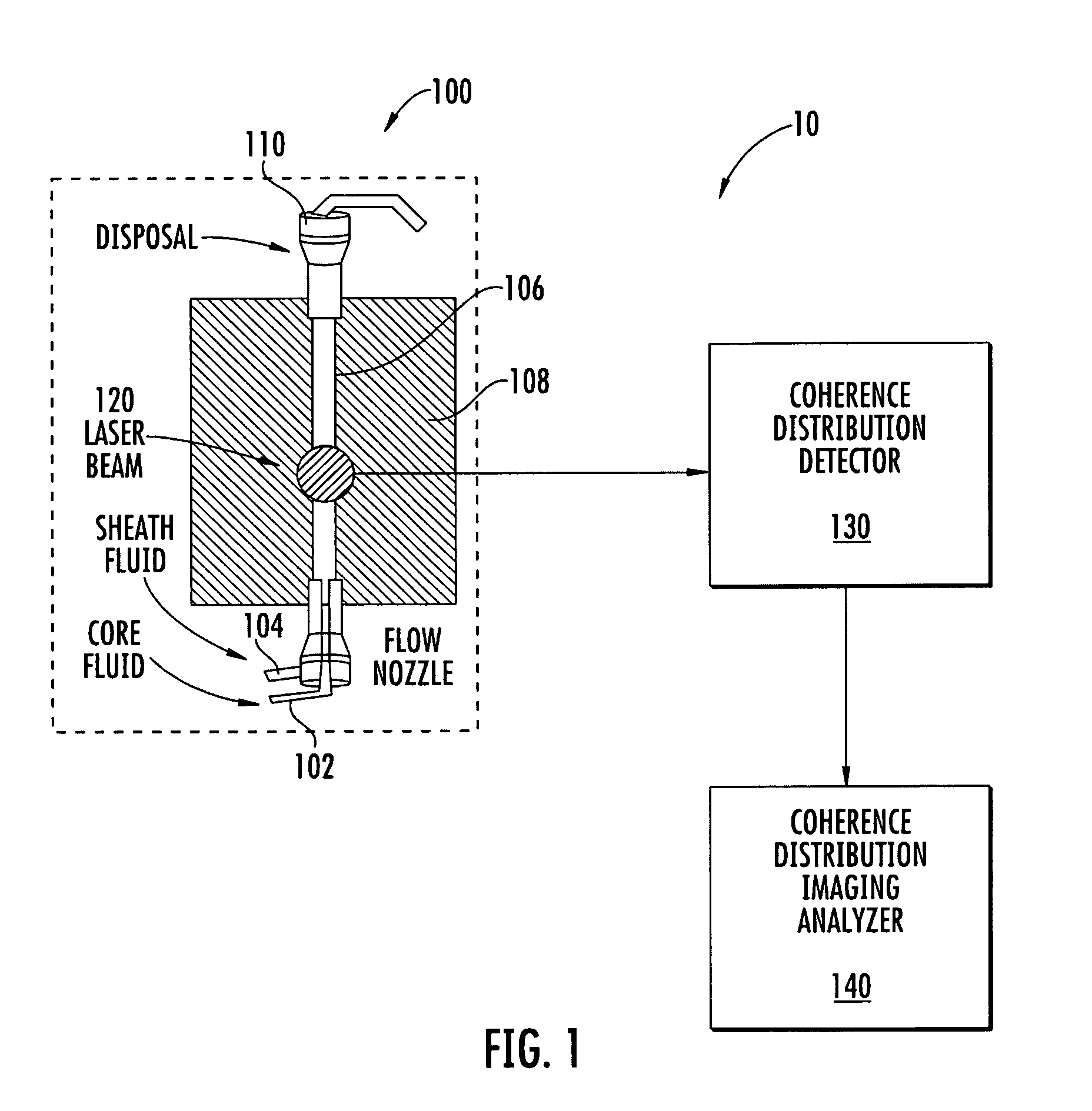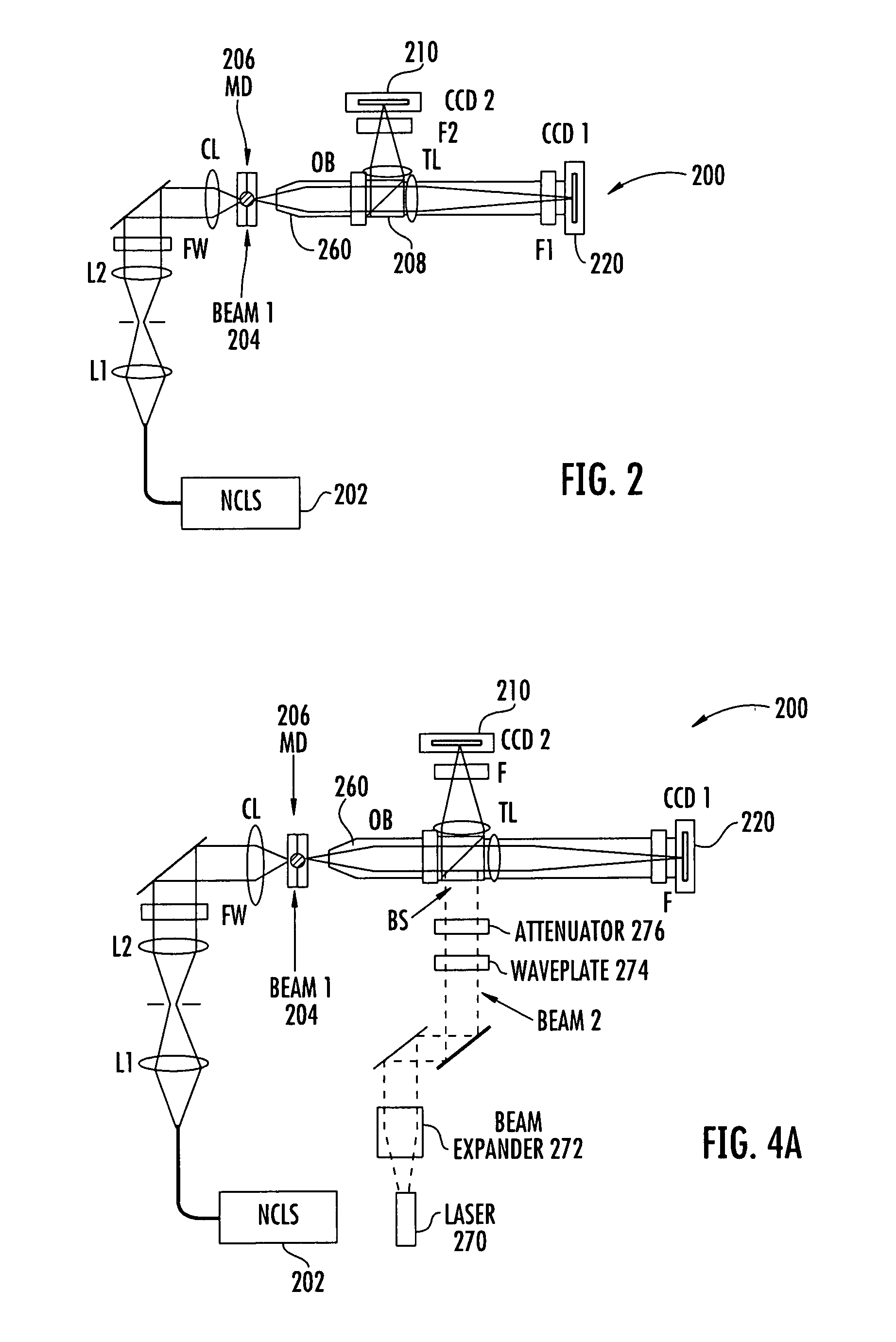Flow cytometer apparatus for three dimensional difraction imaging and related methods
a flow cytometer and apparatus technology, applied in the field of flow cytometers, can solve the problems of difficult, laborious, complex analysis of existing pattern recognition algorithms, and confocal imaging techniques that are generally not compatible with imaging flow cytometers,
- Summary
- Abstract
- Description
- Claims
- Application Information
AI Technical Summary
Benefits of technology
Problems solved by technology
Method used
Image
Examples
example 1
[0080]To increase the morphology information that can be retrieved from elastic light scatter due to excitation by a coherent light source, a prototype microfluidic flow cytometer was constructed to test the concept of diffraction image acquisition with a standard cooled CCD imager (Alta U2000). The prototype is shown in FIGS. 6a-6d. A preliminary study of diffraction images with polystyrene microspheres has been performed. The prototype can have the specifications as set forth in Table 1.
[0081]
TABLE 1The expected specifications of the proposeddual-image microfluidic flow cytometerAdjustable flow speed0.01~0.50 m / sAdjustable core fluid diameter20~150 μmHalf-width of angular region for diffraction image*32°Center of angular region for diffraction image5°, 45°-135°, 180°Lateral resolution of the non-diffraction image*0.4 μmField of view of non-diffraction image*320 μm × 240 μmCCD Camera exposure time10-10,000 μsImage frame transfer rate (251 × 250 pixels112 frames / sper image frame)SNR...
example 2
[0084]Coherent scattering of a monochromatic light beam occurs as a dominant form of interaction when the refractive index n becomes heterogeneous, n(r,λ), where r is the position vector inside a particle and λ is the wavelength for both incident and scattered light, shown schematically in FIG. 9. The scattered fields lead to the spatially coherent and characteristic scatter distributions which can be acquired as diffraction (spatial) or speckle (spatial and temporal) images. With accurate wave models based on the solution of the Maxwell equations or wave model trained pattern recognition software, it is possible to extract intra-particle refractive index distribution and thus three-dimensional morphology information of the scatterer or cells from the elastic light scatter distribution or diffraction image data. The intra-particle index distribution of n(r,λ) correlates with cell's morphology. (Ref: R. Baer, “Phase contrast and interference microscopy in cytology,” in Physical Techn...
example 3
[0087]Forty cultured NALM-6 cells in different cell cycles are selected as a cell model to establish a training database for cell classification. The cells are stained and imaged with a confocal microscope (LSM 510, Zeiss). The three dimensional structures will be constructed for two purposes. First, these structures will be imported into our FDTD code for simulations of angle-resolved elastic light scatter from the cell excited by a coherent light beam. Second, these structures will be analyzed to define multiple classes of morphology features as the basis for development of the pattern recognition software for cell classification. Light scattering by a single biological cell can be modeled as a plane wave incident on a dielectric scatterer in a host medium. To account for the polarization change associated with scattered light, a framework of Stokes vectors is adopted for the incident and scattered light fields and a Mueller matrix for the cell.
[0088]The incident light is represen...
PUM
 Login to View More
Login to View More Abstract
Description
Claims
Application Information
 Login to View More
Login to View More - R&D
- Intellectual Property
- Life Sciences
- Materials
- Tech Scout
- Unparalleled Data Quality
- Higher Quality Content
- 60% Fewer Hallucinations
Browse by: Latest US Patents, China's latest patents, Technical Efficacy Thesaurus, Application Domain, Technology Topic, Popular Technical Reports.
© 2025 PatSnap. All rights reserved.Legal|Privacy policy|Modern Slavery Act Transparency Statement|Sitemap|About US| Contact US: help@patsnap.com



